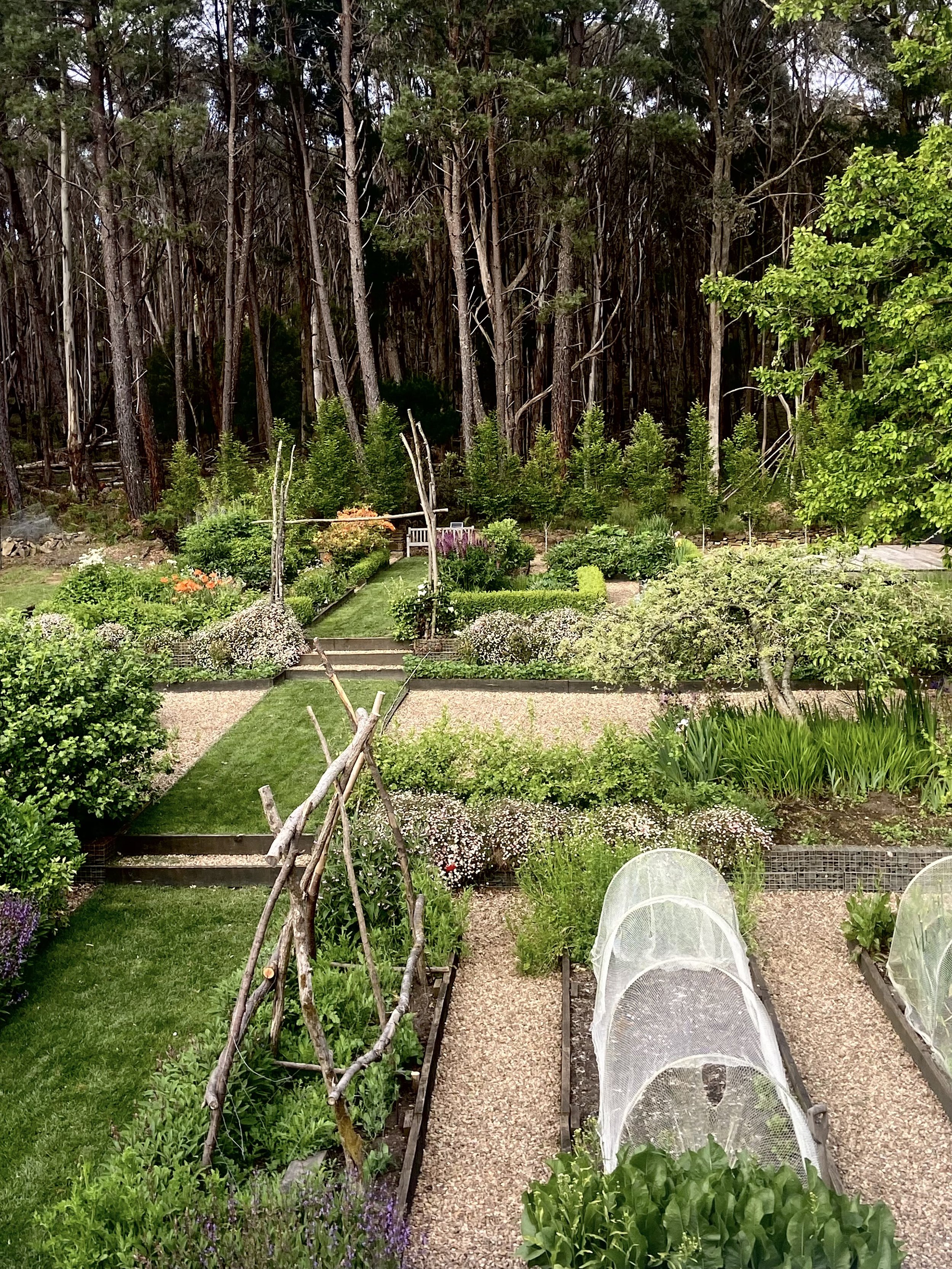Designing Gardens for Every Season: A Personal Reflection
Gardens, like the landscapes they inhabit, are storytellers. With every turn of the season, they whisper tales of change, resilience, and quiet beauty. From the tender green shoots of spring to summer’s exuberant crescendo, the muted richness of autumn, and the stark, sculptural lines of winter, a garden evolves—a narrative in motion.
At Little Cottage on a Hill, I’ve come to cherish this seasonal rhythm, weaving it into the very fabric of my garden’s design. Each element has a purpose, a role to play across the year, ensuring the space feels alive and beautiful, no matter the time.
Here’s how I approach designing gardens for all seasons, where structure and plant selection work in symbiosis to create a landscape that feels timeless and ever-changing.
The Backbone of the Garden: Structure Across Seasons
When blossoms fade and foliage retreats, structure is what remains. It’s the backbone of a garden, holding everything together through the quiet months. In my garden, clipped spheres of Buxus provide a thread of continuity, their evergreen forms anchoring each space with a quiet elegance. These sculptural shapes endure through every season, offering a constant amidst nature’s ebb and flow.
Hedges, too, play an invaluable role. Whether it’s the glossy green of Portuguese laurel or the steadfast presence of yew, hedges create enclosures, guide the eye, and bring a sense of rhythm to the garden. They’re living architecture—soft yet strong, functional yet beautiful.
Paths and walls add another layer of structure. Gravel pathways curve through planting beds, inviting exploration, while stone walls weather with age, their textures deepening the garden’s story. Even vertical trellises lend height and a touch of whimsy, transforming bare walls into canvases for climbers that change with the seasons.
Plants That Earn Their Place
In a smaller garden, every plant must pull its weight. There’s little room for those that offer only fleeting moments of beauty. Instead, I seek out plants that contribute across multiple seasons—plants that evolve with time, revealing new facets as the year unfolds.
Hydrangea Paniculata: Summer sees its conical blooms in full glory, but even as they fade, their papery forms bring a delicate beauty to winter’s starkness.
Echinacea: Bright, pollinator-friendly flowers in summer give way to seed heads that stand tall in autumn and catch the frost’s sparkle in winter.
Miscanthus: Ornamental grasses like this bring movement and texture. Their golden tones in winter soften the garden’s edges, a reminder of warmth even in the coldest months.
Cornus alba (red-stemmed dogwood): It’s in the depth of winter that this plant truly shines, its vivid red stems a striking contrast against muted backdrops.
These are the quiet achievers of the garden, their beauty unfurling with the seasons, always offering something new.
Celebrating Seasonality in Design
Garden designers like Piet Oudolf have shown us how to embrace seasonality with grace and creativity. His planting designs, characterised by drifts of perennials and grasses, are a masterclass in letting plants express their full life cycles—from their exuberant peak to their quiet decline. Oudolf’s gardens, such as the High Line in New York, demonstrate the power of seed heads, faded flowers, and winter stems to carry a garden through its quieter months.
Other designers who excel in creating year-round interest include:
• Dan Pearson: His work often feels like a conversation with the landscape, integrating naturalistic planting with a sensitivity to structure. His Millennium Forest project in Japan is a stunning example of how structure and planting create a narrative across the seasons.
• Nigel Dunnett: Known for his innovative approach to sustainable planting, Dunnett’s schemes use perennials, annuals, and grasses to create dynamic, seasonally evolving gardens, such as the Olympic Park in London.
• Arne Maynard: His formal gardens often combine traditional clipped shapes with naturalistic planting. The juxtaposition of structure and wildness creates an ever-evolving interplay between control and spontaneity.
• Sarah Price: With an emphasis on texture, light, and movement, her designs celebrate the changing seasons, often drawing on natural landscapes for inspiration.
Designing for Small Spaces
In my own garden at Little Cottage On A Hill, every element has to work hard. Plants that offer a singular moment of beauty—a “one-hit wonder”—simply don’t have a place. By combining structure with hardworking plants and designing with the seasons in mind, even the smallest garden can feel expansive and dynamic.
Think about layering: the interplay of bulbs in spring, perennials in summer, and seed heads in autumn, all underpinned by structural elements like clipped shrubs or a carefully placed trellis. Consider planting for transitions—how does one season flow into the next? Choose plants that soften the edges and draw the eye through the space, making the garden feel larger and more unified.
A Reflection on the Seasons
Gardening for all seasons is, at its heart, an act of mindfulness. It’s about pausing to witness the frost glinting on a seed head, the warmth of winter stems catching the light, or the promise held in the first green shoots of spring.
By designing with structure, selecting hardworking plants, and embracing the rhythm of the seasons, we create gardens that not only endure but bring endless joy. Whether you’re working with acres of land or a tiny urban courtyard, this approach ensures your space remains alive with beauty and meaning.
As the seasons shift, so too does the garden. And in those quiet moments—when we stop to marvel at a seed head or trace the curve of a path—we find ourselves connected, not just to the earth beneath our feet but to the passage of time itself.
Here’s to designing gardens that carry us through every season, reminding us of the wonder that lies in change.












